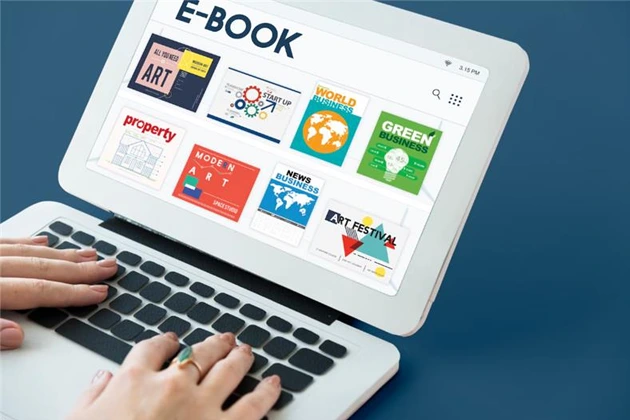In an age ruled by connectivity and content, publishing has evolved from ink and paper to screens and streams. At the frontier of this transformation are digital publication platforms, reimagining how ideas are created, curated, and consumed. These platforms empower publishers and creators to reach global audiences with unparalleled ease. From e-magazines and online journals to interactive blogs and multimedia content, the digital realm has unlocked a universe of storytelling possibilities. Digital publishers today are architects of innovation, fusing storytelling with interactivity, analytics, and design to captivate audiences beyond borders. Whether it’s a digital magazine, a blog, or an interactive e-book, every publication now lives and breathes in real time.
What once required presses and paper now thrives in the cloud, alive with motion, design, and interactivity. As the demand for instant, intelligent content grows, digital publishing stands as the backbone of modern media—transforming how stories are told, shared, and remembered across the digital landscape.
This article dives into the world of online publishing, exploring how digital platforms are shaping and empowering the future of publishing.
All You Need to Know About Digital Publication
The digital publishing industry has grown exponentially since the digitalization of the first document half a century ago. With the launch of Project Gutenberg on July 4, 1971, by Michael Hart, copyright-free works were made electronically available. This marks the very first landmark in the brief history of digital publication. According to a Statista report, the US digital publishing revenue is expected to reach over $27 billion by 2027. The total digital publishing revenue across the world amounts to $22.05 billion, with an average revenue of $78.79 per user for the digital publishing industry in the US. The industry has grown in leaps and bounds, thanks to the widespread adoption of the internet by two-thirds of the global population.
What is Digital Publishing?
Digital publishing or online publishing is the process of crafting and distributing knowledge, media, and content in a digital format for consumption on digital devices like smartphones, computers, and tablets. This knowledge, content, or media is often published in the form of e-books, podcasts, digital magazines, online news articles, email newsletters, and videos. Publishers leverage various digital channels to drive audiences to their content. Through social media, search engine optimization (SEO), and content syndication, digital content is promoted.
Advantages of Digital Publishing
While it may not offer the tactile pleasure of flipping through printed pages, digital publishing opens doors to vast audiences with just a click. Let’s find out the benefits associated with this publishing medium and why the majority of the audience is choosing online publishing over print publishing.
- More Interactive Content: As we move from pages to pixels with online publishing, the content becomes more interactive for users. This publishing allows readers to share their views on the content by commenting, dropping likes, saving, highlighting, and more.
- Cost-Effective Publishing: Digital publishing offers several benefits, making it a preferred choice for publishers, authors, and businesses. Its cost-effectiveness helps it stand out in the publishing market. Unlike conventional publishing, online publishing doesn’t require paper, ink, and binding. This reduction in physical resources not only cuts down production costs but also decreases distribution costs.
- Convenience of Accessing from Anywhere: One of the biggest benefits of publishing online is that readers can access the shared content anytime from anywhere in the world. Thanks to online publishing platforms, audiences can read at their convenience. As it allows downloading and saving options, one can read or watch their preferred online publication whenever they want.
- Time-Efficient: Unlike its counterpart, online publishing allows publishers to publish stories with just a click. It also allows updating or breaking stories as quickly as possible, taking away the time for press and distribution. With online publishing, the creation, distribution, and promotion of the content has become a walk in the park.
- Reaching a Wider Audience: Most importantly, digital publishing enables publishers, authors, and businesses to rapidly reach broader audiences. With online distribution and targeted promotion, engaging readers has never been more straightforward. It enables global content promotion and connects with specific users through effective social media engagement.
- Increased Revenue Generation Opportunities: Digital publishing eliminates extra costs, enabling publishers to earn better revenue through diversified channels. One can increase revenue by advertising through social media and other channels. For example, many digital publishers earn money by selling ad spaces on their websites.
- Environment-Friendly Publishing: Last but not least, digital publishing is environment-friendly. As it eliminates the need for printing, shipping, and distributing, it effectively reduces the carbon footprint associated with traditional publishing.
Top 3 Global Digital Publishing Platforms to Rely on for Your Content
An online publishing platform is a digital service or software that allows publishers to create, publish, track, and distribute content across the web. These platforms are equipped with tools and features that make different types of content sharing easier, including books, articles, flipbooks, magazines, e-books, and more.
-
FlippingBook
FlippingBook transforms your PDFs into immersive, interactive experiences that feel just like reading a real book. Upload your file and watch it come alive with lifelike page flips, the illusion of page thickness, and subtle shadows. With FlippingBook, you can elevate your content by weaving in videos, pop-up images, GIFs, and clickable links. From the very first page, one can captivate one’s audience and set one’s work apart with engaging, interactive documents.
Over 65,000 customers pay for access to more than 3.1k flipbooks daily through this digital publisher. FlippingBook has operated for 20 years. Users enjoy interactivity, easy content distribution, document insights, and analytics as key benefits.
-
Issuu
Issuu is a versatile digital publishing platform designed to help users transform static files into engaging, interactive publications. It enables individuals, businesses, and organizations to upload PDFs, images, and text, and convert them into immersive digital content using either personalized designs or Issuu’s built-in layouts. Known for its ease of use and creative flexibility, Issuu has become a go-to solution for those seeking to publish magazines, brochures, catalogs, or marketing materials online.
Beyond simply sharing digital publications, Issuu offers monetization options that allow publishers to generate income through single-issue sales, subscriptions, or advertiser partnerships. Its built-in analytics tools provide valuable insights into audience behavior, helping creators and brands optimize content performance and maximize revenue potential. Overall, Issuu operates much like a social media network for digital magazines—featuring interactive ads, personalized recommendations, and a seamless reading experience that connects publishers with global audiences.
-
Joomag
Joomag is an innovative online publishing platform that empowers creators to bring their ideas to life with ease and flexibility. Users can design publications from scratch using Joomag’s vast library of professional templates or simply upload a PDF file to instantly convert it into a sleek, interactive digital edition. Whether producing magazines, newsletters, catalogs, or marketing materials, Joomag streamlines the publishing process, allowing users to focus on creativity rather than technical complexity.
What truly sets Joomag apart is its built-in monetization system, which enables publishers to craft multiple subscription packages and sell digital editions, printed copies, or individual issues directly to their audience. This makes it an ideal solution for businesses and independent creators aiming to turn their publications into profitable ventures. Overall, it’s a dynamic platform that combines design, distribution, and monetization—redefining the digital publishing experience.
Learning About Digital Publishers
While finding an answer to the question, “What is a digital publisher?” we have come across a variety of responses. However, we have tried to summarize the actual role and responsibility of a digital publisher.
A digital publisher is responsible for creating and distributing content electronically through various digital channels like websites, e-books, apps, and online magazines. A digital publisher can be an individual blogger, a large media company, or anyone who knows how to publish content online. They use various tools to make their content accessible to a global audience.
As a digital publisher ourselves, we are well aware of the nuances of digital publishing and explore the several benefits it provides. The CEO Views is a business magazine that relies on both print and digital publication of content in the form of articles, blogs, and profiles.










